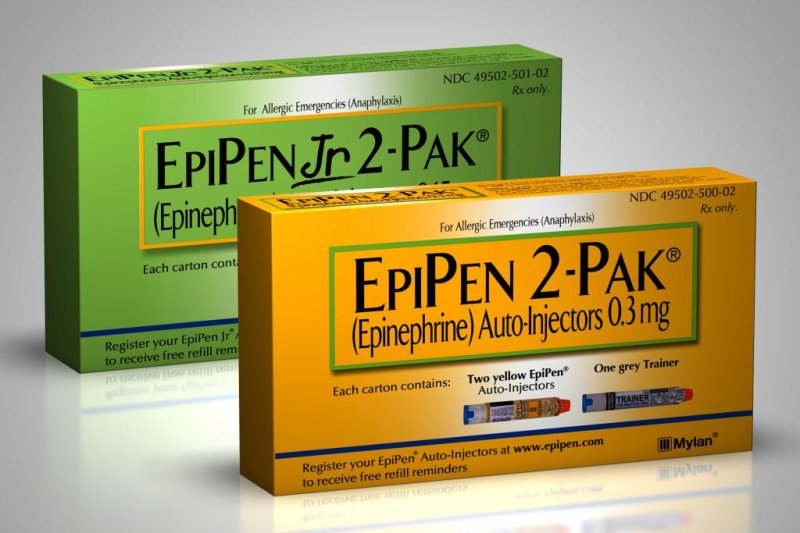Researchers from the University of Birmingham in England have found a dramatic increase in the number of adrenaline autoinjectors such as EpiPens prescribed by doctors during the last decade. Photo courtesy of Mylan.
March 15 (UPI) -- Researchers at the University of Birmingham in England found a dramatic increase in the number of prescriptions for EpiPens during the last decade, but suggest in a new study the trend may be wasteful.
Adrenaline autoinjectors like EpiPens are used to treat the severe allergic reaction known as anaphylaxis.
Although there are other brands and generic options, the drug maker Mylan has cornered the market on the autoinjectors with the hugely popular EpiPen and EpiPen Jr. Recently, Mylan and its CEO, Heather Bresch, was accused of price-fixing last August when prices of EpiPens skyrocketed to $600 for the life-saving drug.
The company was ordered to pay a $465 million settlement to the U.S. government in October when it was found to have overbilled Medicaid for wrongly classifying the EpiPen as a generic product instead of a brand name to avoid steeper rebates to the Medicaid program.
Since then, a rush has been on to make generic alternatives for the EpiPen available to consumers.
For the new study, researchers analyzed data from more than 500 general medical practices in the U.K. between 2000 and 2012, finding nearly 24,000 children had been identified as at risk for anaphylaxis and were prescribed EpiPens by their doctors.
This number represented an increase of three and half times the number of children previously thought to be at risk, and the total number of autoinjectors prescribed jumped by five times in that time period.
It is not uncommon for parents to have more than one device because schools and daycare centers often require EpiPens remain on site, and a device is needed at home. Also, young children are not able to carry and use EpiPens without adult supervision.
While medically necessary, the researchers suggest exploring better prescription methods to cut down on the number and cost of EpiPen prescriptions.
"Of course, adrenaline autoinjectors are life-saving for those at a high risk of anaphylaxis -- but current prescribing trends would appear to be wasteful," Dr. Lavanya Diwakar, of the University of Birmingham, said in a press release. "It may be that GPs [general practitioners] are taking a cautious approach, or that parents are requesting extra devices to cover all of the areas that their child might go, and both are completely understandable. In the absence of clear guidelines, that's a natural tendency. However, there is no evidence that prescribing multiple devices improves safety. What is more important is to ensure that these children carry their device with them at all times and can use them correctly in the event of an emergency."
The study was published in the British Journal of General Practice.















